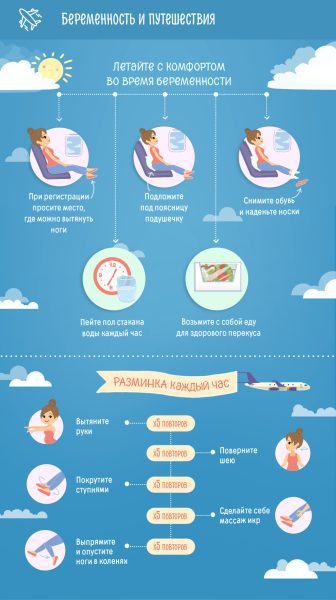
How to travel safely by car during pregnancy?
Content
For expectant mothers, traveling by car during pregnancy raises many questions. Will the many hours of excursion affect the well-being or the child? How to relieve nausea and drowsiness so that the trip does not turn into torment? Finally, is it even necessary to wear seat belts in this state? We will advise you on the basic rules to keep in mind so that the road is pleasant and safe.
What will you learn from this post?
- How to Prepare for Travel During Pregnancy?
- How to travel safely during pregnancy?
- When is it forbidden to travel during pregnancy?
Shortly speaking
If you are pregnant and are going on a long road trip, you should plan your itinerary to avoid city centers, renovations or bumpy roads. Thanks to this, you will protect yourself and your child from stress, inhalation of exhaust gases and from frequent braking. Take time every 2 hours, even for a short stop, and make sure you have enough space around your legs to ensure the most efficient blood flow throughout your body. Be sure to take your pregnancy medical card with you and fasten your seat belt carefully - the top section should go through the center of your collarbone and chest, and the bottom section should go under your belly.
Plan your route and relax
Both severe nausea and excessive sleepiness during pregnancy should be taken seriously and, if possible, passed on to other hands. However, if you have no choice but to drive, stop often for rest and light snacks. If you feel bad you will feel relieved by eating a banana or gingerbread cookie... In the event that you are tired of drowsiness, choose the most varied route, thanks to which you are unlikely to fall asleep while driving.
There is another reason why you should do breaks at least every 2 hours... Taking a walk will not only make you feel better, but will also minimize the risk of venous thrombosis that long travel during pregnancy contributes to. Already a quarter of an hour of exercise stimulates blood circulation and allows you to move on with good health.
It is important that the route you choose does not pass through city centers, road works, and uneven roads... Exhaust fumes, frequent jerks and jerks, and sudden braking or acceleration can not only make nausea worse, but also increase the stress you and your baby are experiencing.
We collect the necessary things
The most important thing to pack in your travel bag is medical documentation: pregnancy chart, test results (including ultrasound) and blood group information. This will help doctors to help you faster if you feel unwell or have a collision. Also, do not forget about the vitamins you take and a bottle of water - after all, beriberi and dehydration in your condition can be even more of a hassle than usual.
Choose a safe place in the car
If you do not need to drive a car, for safety reasons, it is recommended to change into the back seat. Statistically, this is what it is. passengers near the driver are most at risk of injury in the event of an accident... In addition, an airbag that, in a possible collision, will shoot at a speed of 300 km / h and hit you in the stomach, could endanger the life of a child. However, if you are traveling in front, tilt and slide the seat back just enough to go beyond the acceptable range, which is usually up to 30 cm.
Route the belts correctly
The Polish Highway Code allows women who are visibly pregnant to travel without a seat belt. However, you should not take advantage of this privilege, because the benefits (convenience) in no way compensate for the consequences of a potentially dangerous situation for you and your child. Threats are not only collisions. Even with sudden braking when driving at a speed of 5-10 km / h, body inertly leans forward... Because we are driving the route at a much higher speed, a violent fall on the steering wheel or dashboard can lead to placental abruption and miscarriage.
How to travel safely? First of all, remember that the belt does not twist anywhere and should be fastened with a thin layer of clothing, not a jacket, because in the event of an accident and a strong jerk, there will be some slack and the likelihood that the belts will not hold you in place. Start securing by positioning the seat and adjusting the height of the strap.so that you can guide it through the center of your arm and chest. With the buckle on, make sure the waist belt is under your belly and flush with your pelvis. Placed on the stomach, it presses on the placenta and poses a danger to the baby.
When it becomes impossible to properly guide the lower part of the belt with the growing belly, it is worth buying a special adapter for the belt for pregnant women, which will adapt to your new size, will not fit your belly, and thanks to this you will feel comfortable and safe.

Take care of your comfort
Make sure you have enough room to stretch your legs on long rides to avoid swelling. Place both feet straight on the floor and do not cross one another. This is also important stable support for the spine - the back should fit snugly against the chair along the entire length. Rest your head directly on a headrest or crescent-shaped travel pillow to avoid shoulder and head pain. The temperature in the car is also important - it should fluctuate around 20-22 degrees Celsius, this minimizes the risk of overheating or cooling of the body.
When should you give up your trip altogether?
If your pregnancy is going well and you take proper care of your comfort and safety, there are probably no contraindications for driving while pregnant. Yet before every long hour ride it is worth consulting with your doctor for pregnancyindicating the purpose of the trip. This is important because a trip to some areas - incl. in mountainous areas - can be detrimental to your health.
It is worth refraining from traveling not only in case of complications of pregnancy, but also during pregnancy. a few weeks before the deadlinebecause at the end of the day you're not sure if your little one will hurry up the delivery.
Are you preparing your car for a long journey and want to take maximum care of its condition? At avtotachki.com you will find working fluids, necessary accessories and parts that will keep your car in top condition.
Also check:
10 things to check before a long trip
5 most frequently bought roof boxes
Unfastened seat belts. Who pays the fine - the driver or the passenger?
, unssplash.com.
